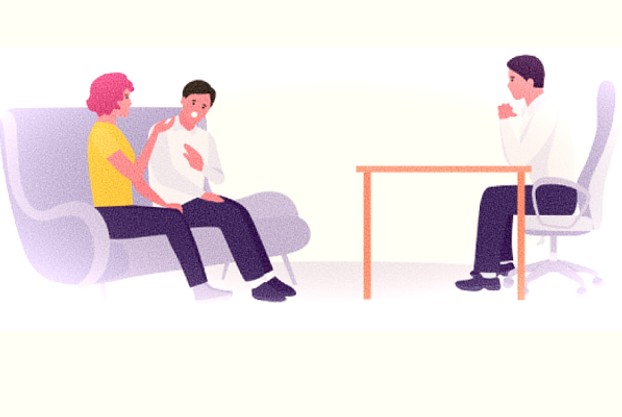The 20-Second Trick For Aim Point Counseling
The 20-Second Trick For Aim Point Counseling
Blog Article
Unknown Facts About Aim Point Counseling
Table of ContentsAim Point Counseling Fundamentals ExplainedRumored Buzz on Aim Point CounselingUnknown Facts About Aim Point CounselingThe Definitive Guide for Aim Point CounselingThe Definitive Guide to Aim Point CounselingEverything about Aim Point Counseling
The longitudinal layout includes a pre-treatment survey and two follow-up surveys at 3- and 12-months post-intervention. The study is embeded in 8 Relationships Australia Victoria centres, across cosmopolitan, outer suburbs, and regional/rural sites. Relationships Australia, a non-government organisation, is the biggest provider of couple coaching and partnership solutions in Australia.
In Australia, the average size of marital relationship before splitting up is 8.8 years, and about half of all separations include couples with children [1] These high prices of partnership breakdown have been regularly connected with adverse health repercussions for both grownups and children following divorce/separation. These include seclusion from assistance networks, and lowered income and requirement of living for both grownups and kids [3], predicaments of loyalty over youngsters for males, and depression and loss of identification for women [4,5]
The 8-Minute Rule for Aim Point Counseling
The results of divorce and separation can be harmful, research suggests that high partnership disharmony in undamaged couples is additionally likely to have negative end results.
Furthermore, aspects that affect the results of these services need thorough investigation. Research study to date has actually identified both couple and individual variables that might add to connection dissonance. These consist of connection satisfaction and dedication at the pair level, and depression at the private degree. Nonetheless, robust study to evaluate relationship-enhancing interventions in the community are limited.
Getting My Aim Point Counseling To Work
While most researches indicate enhancements in connection complete satisfaction complying with couple counselling, they are limited by the samples and measures used, largely short-term follow-up time structures, and evaluations that do not account for the dyadic nature of pair data., is an additional commonly examined relationship result.
To summarise, study suggests that couple-specific variables in addition to individual aspects may forecast the outcomes of couple counselling and connection services. The causal direction of these relationships, nonetheless, is much less clear. These observations are very important, since, to justify and guide the application of partnership solutions such as couple therapy, empirical proof must explore both the results of partnership services and the aspects that predict effective therapy.
, at least in some European nations.

We presently know little about the accounts of pairs that seek relationship education compared to those that look for partnership therapy, or the outcomes of these programs. Nonetheless, unscientific proof suggests that there might be considerable distress amongst at the very least some couples seeking connection education. Connection education programs vary from pair therapy as they are usually very structured, performed in teams, and concentrate on a blend of four parts; recognition, feedback, cognitive adjustment, and skills training [45]
The 25-Second Trick For Aim Point Counseling
Comments includes individuals completing surveys concerning their connection (e.g. actions of interpersonal troubles), and getting details on what their scores indicate. Cognitive-behavioural techniques promote transforming cognitions to help with positive connections.
These results have persisted for up to 4 years in some researches [47] Nonetheless, these meta-analyses highlight restrictions in the present literature on partnership education. Specifically, most of research studies entailed pairs from top socio-economic histories who were not experiencing high relationship dissonance [47,48] This try this website sample account might not stand for clients who normally offer for partnership education and learning.
Excitement About Aim Point Counseling

Very little research study has taken a look at the comparative benefits of couple coaching and relationship education programs. As clients are likely to self-select right into these solution kinds, it is unclear whether particular connection distress profiles existing to each solution kind, or undoubtedly whether there is an interaction in between providing profile, service kind and result.
(https://www.awwwards.com/a1mpoint/)
Thus, we have actually included a 12-month follow-up to assess longer-term fads and effects.
We propose to use multi-level analytical modelling treatments that manage for the inter-dependence of pair information to examine any type of treatment effects. The specific aims of the ECC research are to: 1. Map accounts of customers seeking community agency-based pair therapy vs. relationship improvement programs in terms of socio-demographic and partnership signs (such as partnership fulfillment, partnership commitment, social troubles, and factors for participating in), in addition to health (such as depression, basic well-being) and health and wellness solution use (eg.
2. Determine whether couple therapy and connection education solutions enhance 3- and twelve-month end results for relationship fulfillment, dedication, and depression, utilizing statistical evaluations ideal to combine information. 3. Establish the relative payments of client elements (specific and pair) and therapy/education factors to results at 3- and 12-months, and to sustainability of end results in time.
The Greatest Guide To Aim Point Counseling
Multi-level modelling to establish pre-post differences, regulating for dyadic (couple) degree. To add to the literature assessing the performance of community-based couple coaching. The results will certainly assist scientific decision-making in community-based relationship service setups, and specialist training. 3. To establish the relative payments of client/couple and therapy variables to results at 3- and 12-months, and to sustainability of outcomes in time.
Report this page